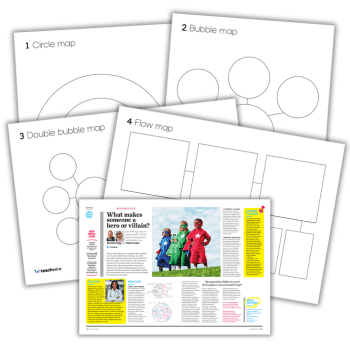Teaching Year 6 – “I thought I knew what to expect, until i tried it myself”

In the latest ‘We need to talk about…’, Louise Clarke takes the leap from Y5 to 6, and figures it can't be that different, can it?

I used to hear the phrase, ‘Everyone should do a stint in Y6’ a lot. I’m not embarrassed to admit that my first thought was usually, “Oh please, climb down from your high horse!”. That was until I found myself teaching Y6 and – uh oh – found myself saying the exact same thing.
Before moving to Y6 I taught Y5 for a couple of years. I worked closely alongside my Y6 colleagues, experiencing the joys that were mock SATs, real SATs and results day, and thought I knew exactly what it was like to prepare children for those dreaded tests. It couldn’t be that bad – they are KS2 tests after all, not Y6 tests.
In fact, didn’t half the questions from the maths paper last year come from the Y3-5 curriculum? All the Y6 teachers were doing were filling in those last gaps to help them reach the required standard. Yes, they had to fit a year’s worth of teaching in before May, but then they got to have fun afterwards, unlike the rest of us.
While slaving away in Y5 I drilled times tables. Oliver still didn’t know his sevens, but there was always next year, right? I did everything under the sun to make sure they remembered to use capital letters and full stops. No, Ava still couldn’t do it, but there would be ages for her to catch up in Y6.
Then I got to Y6. And there is no time. My desk is full of post-it notes, scrap pieces of paper and annotated plans with initials of children on – those who didn’t achieve the LO that lesson who I must catch up with during assembly; those who were absent who I must update with what they missed; those who still can’t spell phase four words correctly (and yet are achieving everything else from the ITAF) that I must organise a phonics group for so they can reach EXS in their writing.
My head is now full of numbers in a way it never was when I taught Y5. I could list off a few numbers right now, and any Y6 teacher could tell you exactly what they mean: 21, 43, 60: the pass marks for last year’s reading, SPAG and maths papers respectively; 100 and 110: the ‘pass’ and ‘greater depth’ scaled scores for the SATs papers; 473: the number of SATs papers I have marked this year so far. OK, so that’s a guess. But probably a pretty good one.
Now I teach Y6, I have used the word ‘boundary’ more than I ever have before. Children achieving 18/50 on last year’s reading paper? Boundary kids! They might get there – must push them. (What does it even mean to ‘push’ a child in reading?) Children achieving 92/110 on last year’s maths paper? Boundary kids! They might achieve greater depth (the holy grail!) – must push them.
What about the ‘non-boundary’ kids? If you’re lucky, you might have a small group of children consistently achieving high scores on all papers – your work is done!
Then there are the children who will never ‘pass’ these ridiculous tests (that’s not very growth mindset-y of me, is it? But we all have them). What happens to them in a Y6 classroom a few weeks before SATs?
In Y6, there is no doubt about it: you are teaching the children how to pass tests. If you disagree, then you are either completely naive, have an incredibly able group of children, or have found a way of beating the system. If the latter, why haven’t you published a book on how you’re doing it? I would definitely buy it. So yes, everyone should do a stint in Y6. Then you will truly understand the importance of getting the kids to learn stuff and the accountability that comes with it. There is no ‘next year’. There is only now.
Louise Clarke is the pseudonym of a Y6 teacher working in England.








